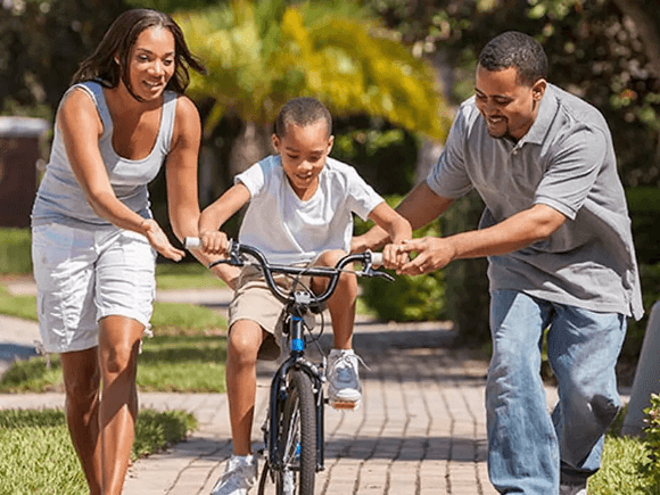
Physical Play and Mental Development
With the rise of modern technology and various gadgets, a challenge is posed among us parents in motivating our kids to engage in physical play. Read through this article for the benefits of physical play and simple activities you and your kids could try!
Kids spend more time in front of a TV or gadget than ever before. A 2014 survey saw 2- to 11-year-old American kids spending an average of 3.5 hours a day watching TV. That amount of time does not include mobile devices. Also in 2014, British kids aged 5-10 years old were glued an average of 4.5 hours daily to a TV, computer, phone, or game console—up from their 2.5 hours of daily TV watching back in 1995.
In 2015, Filipino kids in Grades 3-10 were sitting in front of the TV for 2.9 hours a day on weekdays and six hours a day on weekends. Again, this excludes the hours they were using a phone or computer.
The American Academy of Pediatrics recommends that parents limit screen time among 2- to 5-year-old kids to just one hour a day of high-quality programs like Sesame Street, and that media consumption should not take the place of physical activity. In fact, the advice from the US Centers for Disease Control and Prevention is for kids to do at least one hour of physical activity every day, most of it aerobic exercise like brisk walking or chasing playmates.
The challenge to parents, therefore, is both to restrict their kid’s use of TV and gadgets, and to motivate them to engage in physical play.
The Benefits of Physical Play
Physical play is crucial to early mental development. According to the Child Development Institute, the stimulation kids get from physical play is linked to brain development. It improves the connections between the nerve cells and the brain. Moreover, the United Nations states that playing enhances children’s mental capacity by refining the following faculties:
- Knowledge – For example, kids will want to know, “What is this color? What is this place called?”
- Creativity – Kids may ask themselves, “What shapes can I form with these blocks?”
- Curiosity about the world – “What are those animals in the grass?”
- Language capability – “What does it mean when the score is tied?”
- Skills in planning, organizing, and decision-making – “What can we do so our group wins the game?”
Kids also learn by trying things (ex. feeling the texture of sand), experimenting (what happens when water is mixed with sand), and comparing results (the more water is added, the heavier the sand). They then store the information they get for future use.
For ideas, below are examples of simple physical activities suggested by Australia’s Department of Health and Ageing for toddlers (1-3 years old) and preschoolers (3-5 years old).
- Play games like tag and hide-and-seek.
- Pass a ball or balloon back and forth.
- Dance to music or action songs.
- Copy the motions of animals.
- Let the kid walk to a destination instead of staying in the stroller.
Although adults can supervise kid’s play, they should nevertheless avoid dominating it to let the young ones experience making decisions on their own, explore what interests them, and even lead the group. In fact, free, unstructured play periods like recess give kids a break and a chance to release pent-up energy, which later increases their attention, learning, memory, and productivity, especially for academic activities.
Studies found that when kids do role-playing, they are able to enhance their language, problem-solving, and reasoning skills. Another research on preschoolers showed a link between how complicated their block play was and how well they did in math when they reached teenage years.
Parents need not buy fancy toys either. Materials found in and around the house, such as water, cardboard boxes, and jar lids, will do just as well as items for play.
Overall, playing prepares kids for the challenges of school: it helps them get used to the school environment, and it makes them more ready to learn, more resilient, and better at problem-solving.
Milk Nutrition
To boost kid’s physical and mental development, nutritious foods like milk are important in giving them the strength and energy to play.
Super foods like milk are necessary for complete kid health. The World Health Organization states that breast milk gives one-third of the energy needs of babies 12-24 months old. For toddlers, the healthy fats in whole milk are crucial to the formation of neurons and brain health in general. This is why the American Academy of Pediatrics recommends that kids drink whole milk until the age of 2, after which parents can replace it little by little with low-fat or non-fat milk.
Kids 2-3 years old should drink two cups of milk a day, and those 4-8 years old should take two-and-a-half cups a day. Milk products like PROMIL GOLD® have the nutrients young kids need for mental development and energy. PROMIL GOLD® believes in giving kids the right nutrition early in life for your kid who deserves to be first. For example, PROMIL GOLD®, which is intended for kids 4 years and up, contains the breakthrough alpha-lipids plus DHA, choline, lutein, alpha-protein, calcium, and manganese to help them achieve full mental and physical development.
Physical play, combined with a proper diet that includes milk, can truly increase kid’s mental development, their chances of succeeding in school, and their opportunities for early bonding with family and friends.









